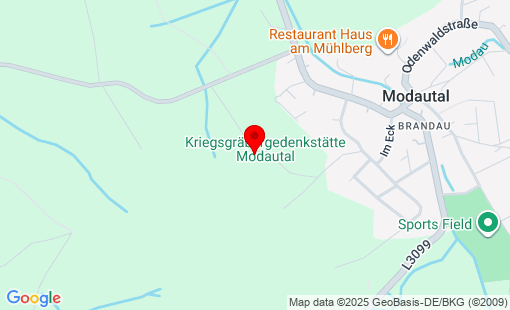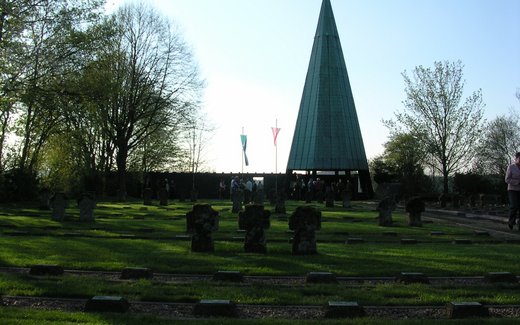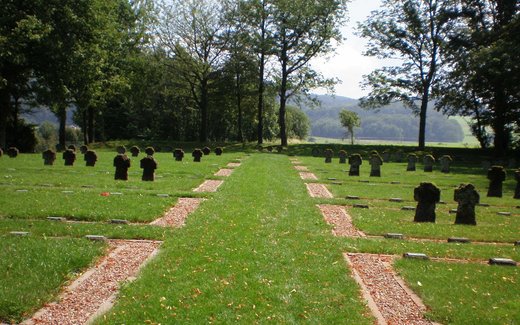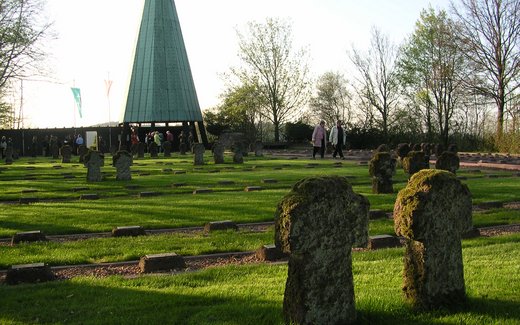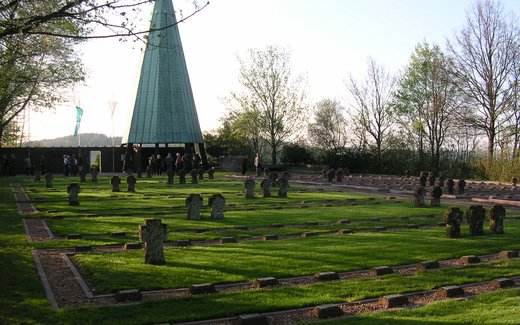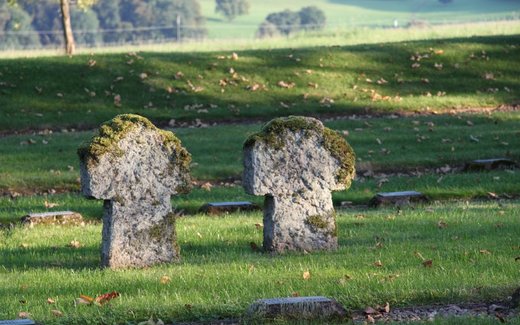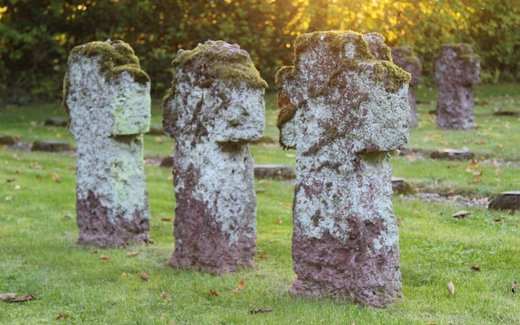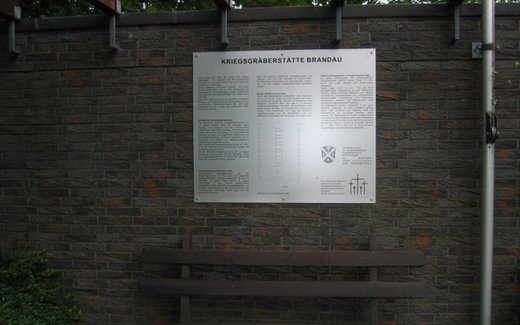This text is a result of the research project of the State Association of Hesse
"On the historical reappraisal of selected war cemeteries in Hesse".
http://www.volksbund.de/hessen/projekte0/forschungsprojekt0.html
The Brandau war cemetery was established at the top of the Geisberg.
Here, 461 victims of the First and Second World Wars - 147 German and 306 foreign
306 foreign casualties from 15 different nations as well as eight unidentified
buried here. In addition to fallen German soldiers and civilian bombing victims
soviet and Yugoslavian prisoners of war as well as Soviet and Polish forced laborers were buried here
and Polish forced laborers found their final resting place here. Among the dead
among the dead are also so-called "displaced persons", i.e. survivors of forced labor
labor and the various concentration camps, who died after the end of the war from the
The consequences of years of mistreatment. The German War Graves Commission
Kriegsgräberfürsorge e.V. established this cemetery in the mid-1960s in
Cooperation with the federal and state governments, various districts and the town of
Brandau. The war cemetery was dedicated on September 25, 1966
and handed over to the care of the municipality of Brandau.
Forced labor in the prison camp
The Dutch forced laborer Marinus Derven was also laid to rest in Brandau
found his final resting place in Brandau. The 24-year-old worked in agriculture
last place of residence was the Rollwald camp. This camp was
set up as a prison camp in June 1938. The prisoners were mainly
mainly used in agriculture. Their tasks included not only
clearing forests and draining swampy areas. In the process
prisoners had to stand in cold water for hours on end - which often led to
often led to serious illnesses. This is probably why Marinus Derven died in 1944 from
double-sided pneumonia.
Inadequate medical aid
Yugoslavian prisoners of war from the Bad Orb and Ziegenhain main camps were also buried in Brandau
also buried in Brandau. In many cases, they had been sent to the
Had been admitted to the Klein-Zimmern military hospital due to tuberculosis. The
partly due to circumstances, partly deliberate neglect of nutrition and medical care
medical care often led to the death of the sick soldiers. About
500 other Soviet prisoners of war who were also admitted to the Klein-Zimmern military hospital between 1941 and 1945
also succumbed to their illnesses and wounds in the Klein-Zimmern military hospital are buried on the
buried at the war cemetery there.
Deported with their mothers
Numerous women and children are also among the foreign war dead.
Some of them were reburied from Nieder-Ramstadt. There were so-called
so-called "female labor camps", family camps and children's camps. Many children
came to Germany together with their mothers who had been deported for forced labor
Germany. As a result of the poor camp conditions, the mortality rate
among Polish and Soviet infants and small children was particularly high
high.
Germany
Modautal-Brandau
Total Occupation: 461 fatalities
Total Occupation: 461 fatalities
Contact
